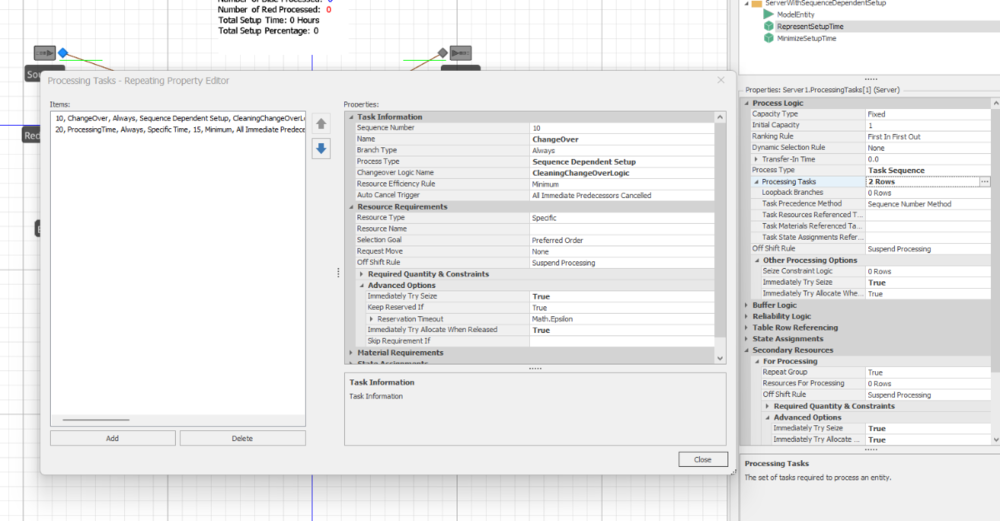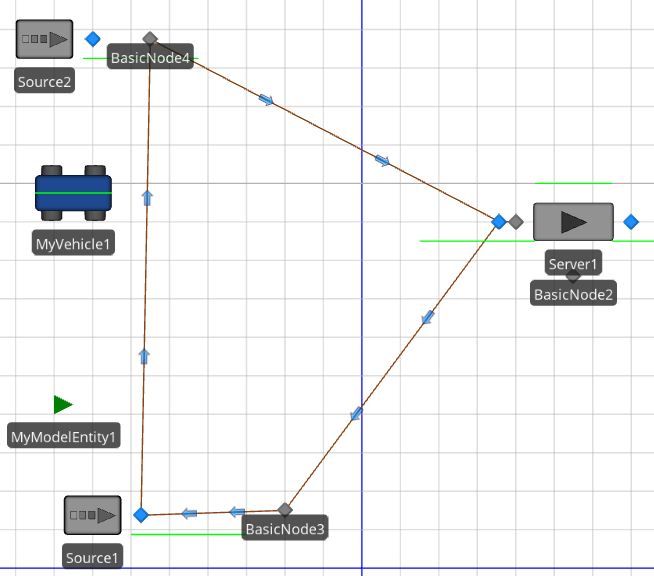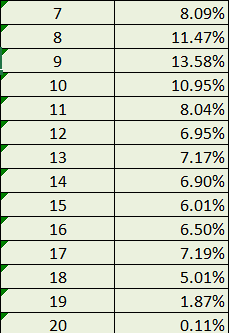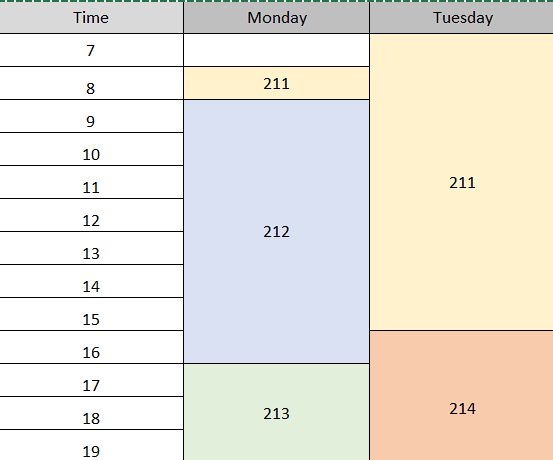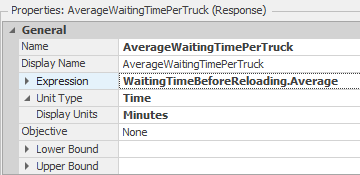Search the Community
Showing results for 'create entities on event'.
-
Rotary filler head object: Can be used in liquid/powder filling operations
deod replied to deod's topic in SI Shared Items
Updated version with prime on infeed. Filler won't start until you have enough entities on the infeed conveyor. IndexingPlate - V4.spfx -
Greetings, I would like to know if there is a way to include the volume of the entities into the vehicles capacities ? E.g. let's say that i have 5 entities with different volumes, and the vehicle has the capacity to transport X m^3, how can i include this in simio ? Best regards,
-
Hello everyone, I have a simple production line of 15 servers, some combiners, nothing too complicated. I need to somehow setup the input buffer at each server to have 1 entity at the start of the simulation and then run it. Or having filled servers with 1 entity at each server. Could anyone please help me and show me how to set it up? I need to start counting the stats once all the workstations are filled, but warmup period does not seem to work for that case, because it destroys the enitities at the servers and starts over. The filled-input-buffer-way looked to me like the easiest solution. But if there is another way, please let me know. Thank you!
-
I'm interested in calculating a yearly production rate. Essentially I could do this if I ran my simulation for 1 year and looked at the output. The number of entities destroyed by my "completed" sink will be what I'm looking for. How do I determine this value if I'm running for longer than 1 year? For example; If I run for 5 years, and I'm watching my model run, at week 186 I'd like to know how many entities had been destroyed by my "completed" sink between weeks 134 and 186 to determine my yearly production rate.
-

Changing Sequence table over time
Rebecca Obasi replied to antonio6vieira's topic in SI General Discussions
Ok I can do a trace and see what I find. Also, I do have different entity/job types getting processed. In my routing tables, I do have the entities specified in the table. I'm trying to use the "ChooseAlternateSequence" simbit as a reference. Is it possible to do this if you have more than one entity type? -

Transferring properties between objects
MauricioBiolato replied to FoodEngFAAB's topic in SI General Discussions
Hi Fabian, I see two (or more) possible alternatives for solving this. Assuming that the box only receives one type of entity you can: 1. Create a state variable (for example st_CurrentBoxType) and every time an entity enters the combiner you assign the entity type to this state variable. This way, one the box is completed and exits the combiner you will be able to assign it the st_CurrentBoxType. 2. The other way is to execute a search step once the box is full. You can use "ModelEntity.BatchMembers.FirstItem" as match condition to locate the first batched entity, then in the found branch use an assing step to assign the ProdType from the found entity I'm sure there are a lot of ways of doing that... hope this helps saludos -
Well, there are two problems in your model: First, there are many gates that are not following the data table. Second: every gate should be on the Gate table, regardless if they will have flights or not. If not, they will create entities on every single arrival of the departure table. You have many gates that are not included on Gate table.
-
Please excuse a naive question from a newbie. Building a simulation for material flows in selective mining. Entities, "low_grade" and "high_grade", supplied at different rates by two sources, both go into a server (the mining machine) which passes them to a separator. I want the high_grade entity to go to a processing subsystem, and the low_grade entity to go to backfill (or a waste dump). Do I presume correctly that I should use a Separator for this? If so, how do I set it up to send the two entity types to different destinations ? At present, all seem to be going to the same destination. Instead of having different entities, could I use one entity type and assign grade values according to a probability distribution? If so, how would I then use a separator to send below-cutoff material to backfill?
-
Hi everyone, I am trying to model entities moving from 10 origins (sources) to 10 destinations (sinks). The entities are simultaneously created according to a certain mix (Entity1 (85%), Entity2 (10%), and Entity3 (5%). However, the number of entities created per event is according to a certain distribution. There is an OD-matrix that captures the number of entities moving from origin to a specific destination. Let's say there are 10 destinations, than the destinations of the Entities are determined according to the OD-matrix: Entity1 and Entity2 can move to any of of the sinks. Entity3 can only move to one specific sink. One solution I came up with was to add weights to Connectors and assign destinations using TransferNodes, but I think that this is very inefficient. I then started to work with DataTables, but I cannot figure out how to probabilistically assign the destinations of the entities. My question is: how to model the probabilistic destination assignment of Entities using DataTables in such a way that it is relatively easy and flexible to add or remove Sources/Sinks? I have added the model for you to see, I hope that you can help me! Many thanks in advance Simple_OD_creation.spfx
-
Hi, I want to generate one type of product with one interarrival time. I have one source and one model entity. However, this entity can have different lengths following probabilities. Depending on these properties, the processing times at the servers will be shorter or longer. I tried to assign a state to the entity before this entity exits the source so ModelEntity.Length becomes DataLength.prob.randomrow. where DataLength is a table with the different lengths and the probabilities associated with those Lengths. The only thing is that it is a property and not a state, but I do not know how to do it in another way. Afterwards, I have different processing times at the servers depending on the different characteristics of my entity. For example, server1 will have different processing times depending on the length. How can I reference to the good processing time say I have added a column to the table DataLength with the associated processingtimes according to the lengths? Finally, I would also like keep track of those different lengths generated and see what the model produced in the end. Thank you for your help, Emilie
-
Perhaps its a little late, but attached is a possible solution to your problem. This started out pretty simple. The problem was how to specify which server is serviced by which resource. One way to do that is a table. But since its changing over time I chose to use a time-indexed table, that is a table that knows about time and returns different data at different times. In this case, each row corresponds to 12 hours and each column specifies the resource needed by the respective server. As they say, "the devil is in the detail" and in this case the "devil" is that the specified resource may change between seize and release (e.g., seize at 11:59, release at 12:05). Simio doesn't like that and all the easy options re-evaluate the resource expression on release and so may try to release the wrong resource. One option would have been to create a custom server, but that seems to be overkill. Here is a somewhat simpler approach: 1) Add an entity state named MyResource and assign it at the last possible moment before use. This value will be used only for release. The assigned value is drawn from the table using an expression like Table1.S1Resource.TimeIndexedValue.Object. Note that the .timeindexedvalue indicates to get the value associated with the current time. And the .object at the end is used to tell Simio to return that value as an object not a number. 2) Use Secondary Resources - Other Resource Seizes to seize the name specified in the table using the same expression above Table1.S1Resource.TimeIndexedValue.Object. 3) Use Secondary Resources - Other Resource Releases to release the resource saved in MyResource. TimeBasedWorkerSelection.spfx
-
I am trying to make a routing decision based on the Candidate node's routerequestqueue's summation of the entities user-defined property. If there are different types of entities with ex. different priority levels. I would like the routing process to choose the transfernode which has the smallest total sum of it's entities priority level. the transfernode that needs to be chosen also has a routing group attached to its entity destination type rule where its final machine has 0 buffer and due to a blocked destination rule, there will be a queue build up at the transfernode that needs to be chosen. I have thought about using a state variable for each node and using add-on process each time a unit enters and leaves a node but because the main model has many multiple nodes the node's entity priority sum has to be able to be accessed through the candidate.transfernode._________________. For example during the routing step in the process section, I have candidate.transfernode.destinationroutinggroupname.routerequestqueue which gives me the node's number of units waiting, but i need to be able to access the candidate nodes summed queued property. Is there either a way to directly access this information, have looked at the expressions and having a hard time finding something. failed attempt: candidate.transfernode.destinationroutinggroupname.routerequestqueue.population.defaultentity.priority.summation or is there a way to use the add-on process where i am adding/subtracting the priority levels, but somehow attach it to the candidate.transfernode's property Hopefully this makes sense. If you look at the file, please ignore the upper half and focus on the transfer nodes maintransfer, transfernode1 and transfernode1_1. maintransfer has an entered add-onprocess which is the subject of this question. the route process and it's selection expression is what I'm trying to adjust but find a way to express the candidate transfernodes of transfernode1 and transfernode1_1 (which are part of the XferRouting group). I'd like to choose and compare the total summed priority level of each node's queue. Simple_Routing.spfx
- 2 replies
-
- routing
- expressions
-
(and 2 more)
Tagged with:
-
Hello, I'm having strugles trying to configure the setup for the next process: some entities have a diferent processing time and setup time, before to enter to be processed in the workcenters, the workcenter have to be cleaned. I looked the simbit, "ServerWithSequenceDependenrSetup" but I'm confused with the configuration of the processing task. I dont know why we have two lines and o why only one have associeted the change-over matrix.
-
Hello, I have a Arrival Table, but I only want to create Entities of a specific part of the Table based on a property. IntCol Entity 0 A 0 C 1 B 1 c So, the source should create all entities with a certain integer in column 'IntCol'. The integer value is assigned by a referenced property that I can experiment with different parts of the ArrivalTable For example: If Property == 0 , create only A and C in the source. How can I do that? All the best
-
Hello, I have two concerns. In one of my small models I want my transporter to make a round and pick up the entities at the different locations and bring them to a destination (Server1). In addition, I would like that the individual times are measured with a state MyModelEntity.TmpStart and MyModelEntity.Duration, in order to calculate afterwards with a transport cost rate the cost for each individual part. Unfortunately I'm getting desperate with this and getting various error messages, does anyone know how to implement this? Best Regards, Gashi
-
Hi, I have 6 entities arriving at exactly 8am each day. Each of the 6 entities will create a certain number of entities on arrival from their respective distributions. How do I model in my source? I cannot have multiple sources as each entity has its own server processing times. Please can you help? Thank you
-
First of all, Thank you so much for the answer in advance, but could I bother anyone who answers with some example model or picture of the method I am still new to SIMIO, so I am concerned about following the advice correctly. 1) Let's say every day I have X number of people arriving( using distribution to generate numbers outside SIMIO randomly). This is the shop where people visit from 8.00 to 20.00 every day with different visit rates per hour (example as below), and I use X to time to this percentage so I can get the exact number of visits per hour. The problem is I want to make an arrival interval random with some sort of function/distribution or table(excel calculation), not a stable arrival rate. My idea is random from 0 to 1 and gives the random number (Y) to match with X outside SIMIO and put the whole table in, but I wonder, is there any better method than this? 2) The second question is about two entities from different sources, A and B. A and B will go through the same server for three servers, but after server 3, one will go to 4, and one will go to 5. Can you give me any advice on how to do that
-
Hi, everyone I am developing a postgraduate project related to hospital OPD simulation. In one examination room, there will have a round 5 to 6 doctor using this room during the week. Now I am facing one problem, because every doctor process have difference processing time(function) as picture below(The number is doctor ID). Is there any method to set a difference process time during every shift in one server? or I have to create a process for this them?
-
Hello everyone, I'm thrilled to share that I've successfully established my simulation model and conducted extensive verification and validation. Now, I'm ready to take the next exciting step: experimentation! While I've made considerable progress, I've encountered a minor setback. It seems that for certain scenarios, the response 'AverageWaitingTimePerTruck' isn't displaying any values. Interestingly enough, this issue only arises when conducting experiments with higher throughput values. The response is defined by averaging the tally statistic 'WaitingTimeBeforeReloading' of the Truck Entities in my model. Have any of you experienced a similar situation before? If so, I would greatly appreciate your insights on resolving this matter. Thank you in advance for your support! Best regards, Toon
-
Hello, In my model I’ve made entity arrival mode to be On event and I’ve created an event named CommandeEvent in the Definition ==>event section. In order to action the event, I’ve created a process called ProcessEvent in which I have a decide step followed by a fire step that fire the CommandeEvent if the condition in the Decide step is respected. But when I run the model, the entities are not created. Is there something I should do differently or add ? Thank you, Flora
-
Hi all, I am building a simulation of a system with multiple separators which MemberOutput nodes two different routing policies can occur: 1. Standard Policy In the 'Standard Policy', each separator has its dedicated transporter assigned to it and entities arriving at the MemberOutputNode can only select the defined transporter. To this end, a DataTable has been constructed. 2. Power Hour policy In the 'Power Hour Policy', operations are shifted into a higher gear. We select a maximum number of three nearest transporters whose ride request is 0 and include them in the DataTable which specifies the Transporter Selection. Entities arriving at the MemberOutputNode can now request rides from any transporter in the DataTable. I tried to reference to a DataTable called 'TransporterSelection.EPT' in the Transport Logic of each MemberOutput Node. Each value in the EPT column is cross-referencing to a DataTable in which I try to assign the MemberInput Nodes as a Node Reference State Variable of the Transporter (EPT). Is there any way to dynamically assign more (or less for that matter) Transporters to a TransferNode? Hope that anyone knows how to do this! Cheers, Toon
-
Hello, I am writing my master thesis on production system design with simulation modeling. I have designed two models in Simio - one for current production system and one for optimized one. They are both designed in a correct way and they work as they are supposed to. The only difference between them is in path lengths. The difference between results from optimized and current system should be 3 - 5 % but for some reason I get all of the results identical to the last decimal place after running an experiment. I have attached a picture of my path properites and travel logic of entities. My guess is that for some reason path length is not being considered in the simulation. If anybody has any ideas what could be wrong, i would really appreciate your help.
-
Hello, I'm working on a problem where at some point a worker will transport a specific amount of pallets. Whereafter these pallets are processed by a server and a server wil process them. Once processed, a different worker (or the same worker) will move the pallets to the next server. How do I save these entities as a batch and let workers know how much pallets they can process? At the moment I have two approaches. One where I create a 'batch' as an entity and assign to it the amount of pallets. The 'problem' in that case is that I do need to count the amount of pallets at a server, since it has a certain capacity. And sometimes an initial batch whitch comes from a truck needs to be split to fit the capacity of workers. But once this would be fixed, the worker will always transport the right amount of pallets. A second approach that I have tried is to create the pallet entities normally, and assign a 'PalletHistory' in the modelEntity properties, but I find that after processing I can't find this palletHistory for the workers to get a sign of how many pallets to transport. Do any of you guys have an idea how I can approach this? Greetings
-
Hi all!, would you help me with this? I want to do a discrete simulation of the current situation in a Hospital in the inpatient unit. I have the data of one year of patients, (over 18,000 people) and I want to use that data in the simulation. That would make more easy to model the server processing times, while we will use the real server times and sequences that each patient had, instead to use probabilities and distributions for the sequence and server times respectively. So, I created a table where each row represent a patient with a sequence (which bed he was assigned due to his level of acuity) and the time that he spent in that bed before he was dispatched. The are more times involve, but we can focus in those parameters to have it more simple. So, the table have the patient name (entity) ,bed (sequence) and Length of Stay in the bed (server processing time). I don't know if is possible that when I create each entity, I can assign, based on that table, the sequence and the server processing time for each patient. How I can do that? Thanks for your time and help
-
FullGate version 17 (both side take off).spfx We encounter few problems: 1. Why the plane( entities) only go to one side for waiting to take off but not both side used? 2. Any fomular can i add into the simio? The plane will choose which path to go on the taxiway. Such as the plane on the Node 82 if the taxiway A(path 179) had 3 plane waiting but taxiway B (Path 160) had 1 plane waiting, than the plane will choose taxiway B to wait for take off. Gate.xlsx 30 Departure.xlsx





